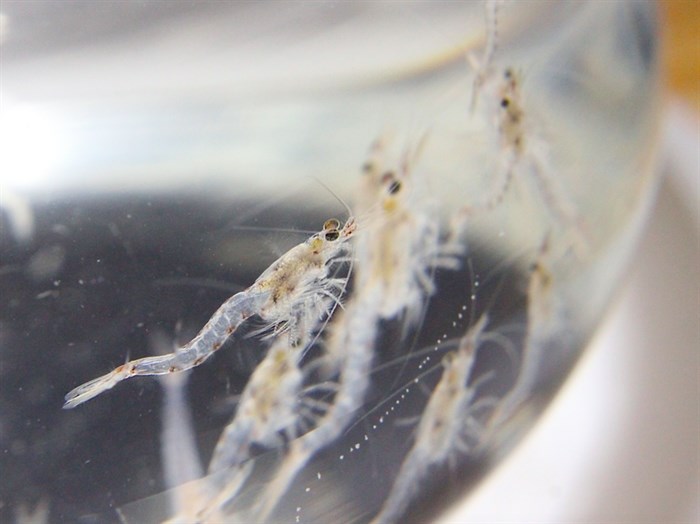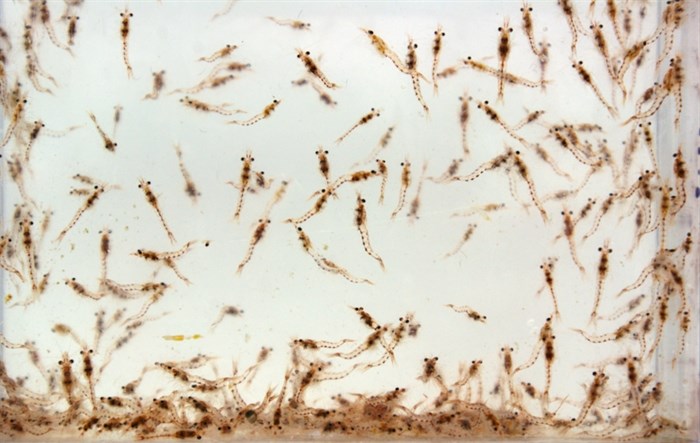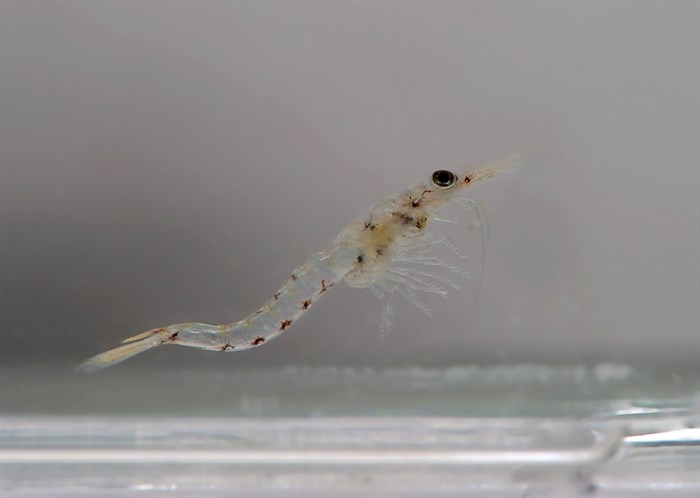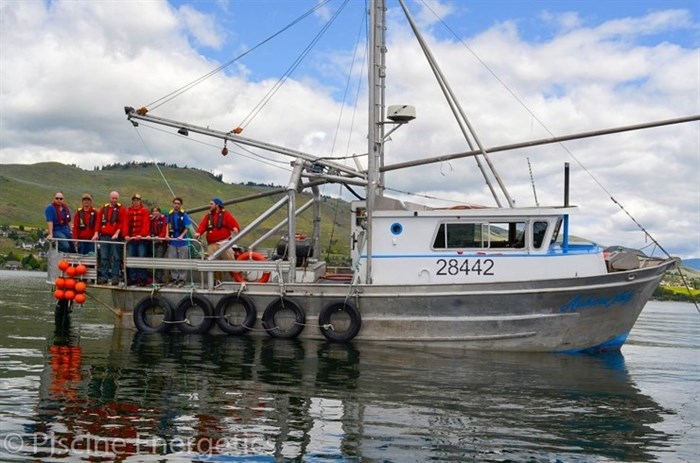
Mysis shrimp from Okanagan Lake.
Image Credit: SUBMITTED / Piscine Energetics
June 13, 2020 - 1:00 PM
By the time the B.C. government realized that introducing mysis shrimp into Okanagan Lake was a bad idea, it was too late.
Mysis shrimp were first introduced into Okanagan Lake in the mid-sixties to provide a food source for the Kokanee, in order to increase their declining population.
Experts at the time believed this would work, for several reasons.
"They had seen in experiments in the lab that if you have Kokanee in the lab in a tank and you provide them with mysis… the fish would feed on them," TRU ecologist Dr. Louis Gosselin said.
The Ministry of Environment tested this theory on Kootenay Lake. The mysis were introduced, and the Kokanee population got a boost, leading researchers to believe that the project was a success.
However, there was a different factor at play in the ecosystem.
"The reason it did well is that there used to be a fertilizer plant on the edge of the lake which was polluting the lake," TRU ecologist Dr. Brian Heise said. "It was adding more nutrients and so the nutrients were actually supporting the food chain."

Mysis shrimp from Okanagan Lake.
Image Credit: SUBMITTED / Piscine Energetics
When the plant closed down, the Kokanee population took a hit. Researchers realized that the population only went up because there was an abundance of food to go around. The fertilizer increased the number of phytoplankton, which in turn led to more zooplankton, which fed both the mysis shrimp and the Kokanee.
It became clear that the juvenile Kokanee and mysis shrimp were actually competing for the same food, and the mature Kokanee weren't eating the mysis.
"Once they're in the lake, they don't live at the same depth at all," Gosselin said. "The fish spend most of their time deeper down during the night and come to the surface during the day, and the mysis tend to go down during the day and come to the surface at night."
Unfortunately, by the time the discovery was made public, the mysis had already been introduced into lakes across the province, including Okanagan Lake.
Because mysis shrimp have few predators in the lake, and have access to an abundant food source, their population has exploded over the past several decades.
"They're in high population abundance now," Gosselin said. "They've definitely taken over."

A mysis shrimp from Okanagan Lake.
Image Credit: SUBMITTED / Piscine Energetics
The problem is that the mysis shrimp are hard to remove from a lake, especially one as large and deep as Okanagan Lake.
In the late nineties, a local company stepped in with a solution.
Piscine Energetics has been harvesting mysis shrimp out of Okanagan Lake using specialized nets for the last twenty years.

The vessel used for shrimp collection in Okanagan Lake by Piscine Energetics.
Image Credit: SUBMITTED / Piscine Energetics
As Kokanee are visual predators, the shrimp follow the dark.
"They virtually swim 20 thousand times their body length every night to have a meal," Piscine Energetics President Nuri Fisher said. "As soon as the sun comes up, they disappear."
In the spring and summer, Piscine Energetics harvests the shrimp at night, when they move to the surface.
The harvested shrimp are flash frozen and distributed to commercial aquariums across North America for fish food. Recently, the company has developed several products for home aquariums they sell to pet stores.
The mysis shrimp out of Okanagan Lake have a unique biology that makes them excellent for fish food.
"The labs, they couldn't believe the amount of lipids, and the quality of the lipids found in the mysis shrimp," Fisher said.
This is due to the environmental conditions in the Okanagan.
Because Okanagan Lake is so deep, the water near the bottom remains cold all year.
"The organism living in a cold environment, they have to store a tremendous amount of lipids," Fisher said.
The Okanagan sunshine makes the water near the surface of the lake very warm. This boosts the production and nutritional value of the algae the mysis shrimp eat, he said.

The crew at Piscine Energetics processing the mysis shrimp.
Image Credit: SUBMITTED / Piscine Energetics
Fisher said they have seen a decline in the mysis population in Okanagan Lake. However, the shrimp are still an issue.
"A lot more work needs to be done to rehabilitate and get those salmon numbers back to to where they should be," he said.
To further reduce the mysis shrimp population, Heise and Gosselin are currently working on a new research project in partnership with Piscine Energetics and the Freshwater Fisheries Society of B.C.
They are examining the possibility of using the mysis shrimp to replace the fish meal used to feed trout and salmon in hatcheries across the province.
"When you have to feed these fish, like trout and salmon, you have to put a large amount of protein into their diet to make fish grow well," Heise said. "We can make that food more sustainable by getting rid of an invasive species, the mysis, and by making our trout more sustainable."
The project was delayed due to COVID-19, so the results of the study have not yet been released.
This story was originally published June 12.
To contact a reporter for this story, email Brie Welton or call (250) 819-3723 or email the editor. You can also submit photos, videos or news tips to the newsroom and be entered to win a monthly prize draw.
We welcome your comments and opinions on our stories but play nice. We won't censor or delete comments unless they contain off-topic statements or links, unnecessary vulgarity, false facts, spam or obviously fake profiles. If you have any concerns about what you see in comments, email the editor in the link above.
News from © iNFOnews, 2020